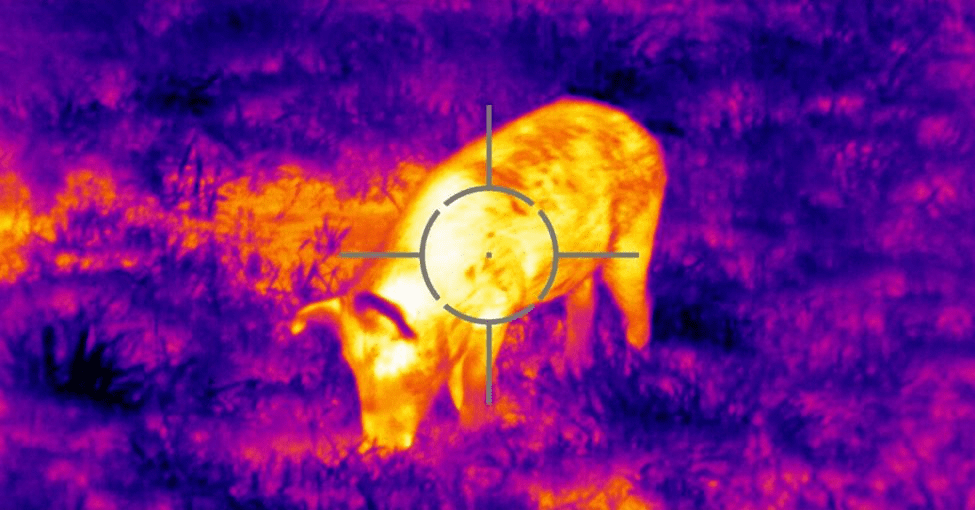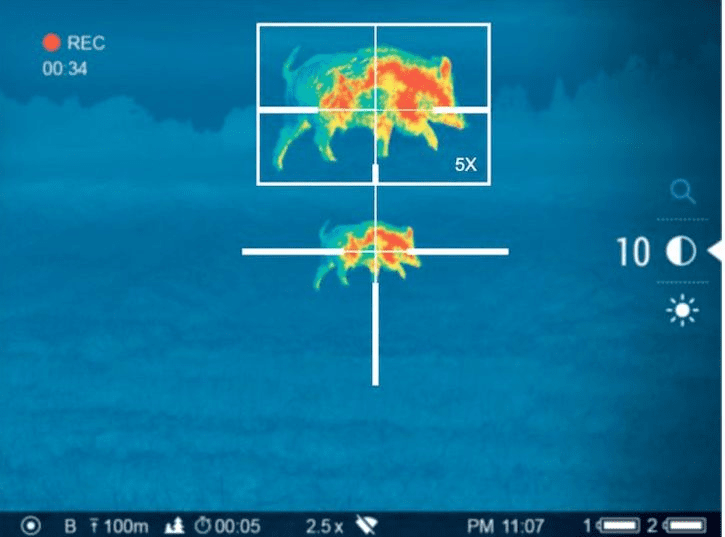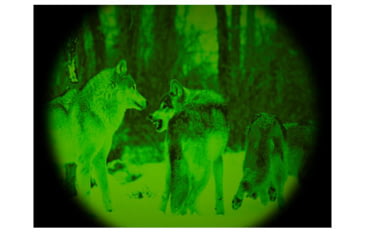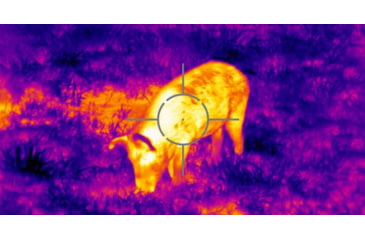 Comparing night vision and thermal optics is a popular topic, but many professional hunters and guides prefer using both. A popular setup is using a night vision monocular so that you can see activity in wide-open spaces and then switch to a thermal rifle scope when you need to dial in on a target.
Comparing night vision and thermal optics is a popular topic, but many professional hunters and guides prefer using both. A popular setup is using a night vision monocular so that you can see activity in wide-open spaces and then switch to a thermal rifle scope when you need to dial in on a target.![]()
While most electro-optics makers would love for you to buy both, let’s face it, they’re expensive pieces of gear. While it might make sense to start out with night vision – mainly because they’re cheaper – most people will eventually want a thermal optic. In this article, we’ll go over the reasons why you might want to skip night vision and buy a thermal scope instead.
The Differences: Night Vision vs Thermal
On paper, night vision beats thermal in most ways. They’re cheaper, lighter, more durable, offer greater depth, and have much longer battery life. Also, you can look through night vision all night whereas a thermal device will make your eyeballs feel cooked after a couple of hours. But if you ask any seasoned night hunter what they prefer mounted to their rifle, most will answer thermal.
The reason they’ll say that is because thermal will work under conditions that would render night vision useless. When you use a thermal device, you can see through smoke, fog, sand storms, fire, and even through some vegetation. Plus, you can see residual heat signatures like a handprint on a car or fresh footprints. Additionally, you can use a thermal optic no matter the brightness outside. When it comes to night vision, especially non-digital night vision, using this type of optic during the day or in a bright area can permanently damage the sensor and leave you temporarily blinded. This is because night vision optics work by enhancing trace amounts of light to brighten the entire area. When an area is flooded with light, the sensor is overloaded and you essentially flashbang yourself when looking through the optic.
Is Thermal Imaging the Same as Night Vision?
When you break down the technology, night vision and thermal are very different. Despite its name, night vision actually needs some light to work. What night vision does is amplify the light available in dark or lowlight conditions. However, it won’t work in absolute darkness or during the day.
Thermal, on the other hand, requires no light to work. A thermal device picks up on infrared waves, which is thermal heat, so that you can effectively detect targets through things that could conceal your target or obscure your view. This is largely the argument you’d hear in favor of thermal. Even though you can't use a thermal scope to see through walls or full cover, it often penetrates minor concealment, such as bushes, tinted glass, and other obstacles. This makes it especially useful for predator hunting, as you can spot the target when they're bedding down and out of your direct sight. And yes, a thermal scope will work in daylight, unlike a night vision scope.
Thermal Scope vs Night Vision

Certainly, this is a narrow counterargument to night vision. You can configure your rifle with other gear like an infrared laser to make your night vision scope more effective or you can buy a higher-end night vision scope. No matter which way you cut it, thermal and night vision technology is different. They both have their advantages and disadvantages, and it all depends on your needs and budget to decide which one is best for you.
For more information on night vision and thermal devices, check out the library of How-To Guides on OpticsPlanet!











